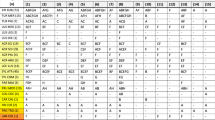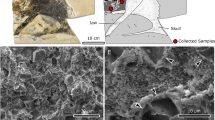Abstract
MELATONIN, isolated by Lerner et al. in 19581 from bovine pineal glands, is the most potent agent known that makes the amphibian melanocytes lighter in colour2. The physiological role of this compound in mammals3,4, as well as its presence in the epiphysis of lower vertebrates5, has been the subject of many recent investigations. It is hard to prove the presence of melatonin in pineal tissues of various origin because it is usually present in these glands only in extremely small quantities. Investigations of the biosynthesis of melatonin offered new possibilities to demonstrate this compound in an indirect way. The presence of the synthesizing enzyme, 5-hydroxyindole-O-methyl transferase, in homogenates of pineal glands of the rat6 and the hen7 would indirectly indicate the presence of melatonin in the epiphyses of these species. Another indirect method for demonstrating melatonin in Amphibia has been described by Charlton5, who demonstrated an accumulation of labelled precursors of this compound in the epiphysis of Xenopus laevis.
This is a preview of subscription content, access via your institution
Access options
Subscribe to this journal
Receive 51 print issues and online access
$199.00 per year
only $3.90 per issue
Buy this article
- Purchase on Springer Link
- Instant access to full article PDF
Prices may be subject to local taxes which are calculated during checkout
Similar content being viewed by others
References
Lerner, A. B., Case, J. D., Takahashi, Y., Lee, T. H., and Mori, W., J. Amer. Chem. Soc., 80, 2587 (1958).
Quay, W. B., and Bagnara, J. T., Arch. Intern. Pharmacodyn., 150, 137 (1964).
Chu, E. W., Wurtman, R. J., and Axelrod, J., Endocrinology, 75, 238 (1942).
Wurtman, R. J., Axelrod, J., and Chu, E. W., Science, 141, 277 (1963).
Charlton, H. M., Nature, 204, 1093 (1964).
Wurtman, R. J., Axelrod, J., and Phillips, L. S., Science, 142, 1071 (1963).
Axelrod, J., Wurtman, R. J., and Winget, C. M., Nature, 201, 1134 (1964).
Prop, N., and Ariëns Kappers, J., Acta Anat., 45, 90 (1961).
Quay, W. B., Anal. Biochem., 5, 51 (1963).
Lerner, A. B., Case, J. D., and Takahashi, Y., J. Biol. Chem., 235, 1992 (1960).
Bagnara, J. T., Science, 132, 1481 (1960).
Burgers, A. C. J., and van Oordt, G. J., Gen. Comp. Endocrinol., Supp. 1, 99 (1962).
Schlossberger, H. G., Kuch, H., and Buhrow, I., Z. Physiol. Chem., 333, 152 (1963).
Lerner, A. B., and Case, J. D., J. Invest. Dermatol., 32, 211 (1959).
Giarman, N. J., Freedman, D. X., and Picard-Ami, L., Nature, 186, 480 (1960).
Owman, Ch., Intern. J. Neuropharmacol., 2, 105 (1964).
Author information
Authors and Affiliations
Rights and permissions
About this article
Cite this article
VAN DE VEERDONK, F. Separation Method for Melatonin in Pineal Extracts. Nature 208, 1324–1325 (1965). https://doi.org/10.1038/2081324a0
Published:
Issue Date:
DOI: https://doi.org/10.1038/2081324a0
This article is cited by
-
A survey of the location, isolation and identification of indoles, pteridines and some unknown active substances in sheep pineals. The possible significance of pteridines for the neuroendocrine control of neoplastic growth
Journal of Neural Transmission (1980)
-
Age-dependent effects of 5-methoxytryptophol and melatonin on testes and comb growth of the white leghorn (Gallus Domesticus L.)
Journal of Neural Transmission (1972)
-
Separation of pineal extracts on sephadex G-10
Journal of Neuro-Visceral Relations (1972)
-
Separation of pineal extracts on sephadex G-10
Journal of Neuro-Visceral Relations (1970)
Comments
By submitting a comment you agree to abide by our Terms and Community Guidelines. If you find something abusive or that does not comply with our terms or guidelines please flag it as inappropriate.



